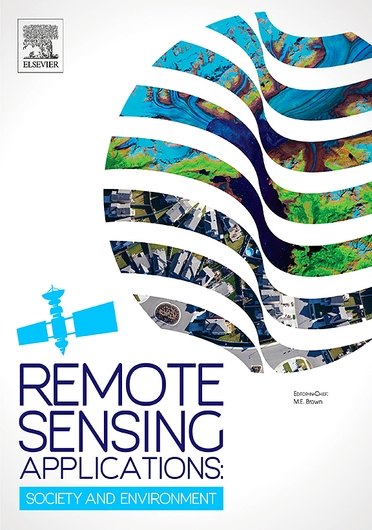Evaluations of satellite/reanalysis rainfall and temperature products in the Bale Eco-Region (southern Ethiopia) to enhance the quality of input data for hydro-climate studies
Abstract
The sparse distribution and lack of meteorological stations due to deficit infrastructure in developing countries is one of the limiting factors for hydro-climate studies, and dependency on globally available data is often prone to various level of errors. Thus, this study aimed to evaluate the performance of satellite/reanalysis rainfall and temperature products in the Bale Eco-Region (BER) in Southern Ethiopia. This study evaluated performances of three rainfall products such as the Climate Hazards Group Infrared Precipitation with Stations, version 2.0 (CHIRPS v2.0), Tropical Applications of Meteorology using SATellite and ground-based observations, version 3.1 (TAMSAT v3.1) and Multi-Source Weighted-Ensemble Precipitation, version 2.8 (MSWEP v2.8). The two temperature products evaluated in this study are ERA5 and Modern-Era Retrospective Analysis for Research and Applications, version 2 (MERRA v2). Evaluations of these satellite/reanalysis rainfall and temperature products were undertaken against observed data (1995–2014) in temperate, sub-tropical and tropical agro-ecological zones (AEZs) across multiple temporal scales ranging from the daily to annual. For assessing the performances of satellite/reanalysis rainfall and temperature products, a point-pixel evaluation approach was undertaken using five continuous evaluation scores such as correlation coefficient (R), mean absolute error (MAE), root mean square error (RMSE), percent bias (PBIAS) and Kling–Gupta efficiency (KGE). Categorical sores such as Probability of Detection (POD), False Alarm Ratio (FAR) and Frequency Bias Index (FBI) were also used for assessing the rainfall products. The findings revealed that MSWEP v2.8 has better performance than CHIRPS v2.0 and TAMSAT v3.1 in temperate and tropical AEZs at the daily, dry season and annual time steps as well as in sub-tropical AEZ in dry season and annual temporal periods, but MSWEP v2.8 displayed comparable performance with TAMSAT v3.1 in the daily time step. CHIRPS v2.0 exhibit superior performance in the monthly time scale in the three AEZs as well as in the wet season in temperate and tropical AEZs, but TAMSAT v3.1 has outperformed than CHIRPS v2.0 in the wet season in sub-tropical AEZ. The finding also indicated that the capability of MSWEP v2.8 to detect the rainy days (79–86%) and frequency of rainy days (0.99–1.79) is better than CHIRPS v2.0 and TAMSAT v3.1, but TAMSAT v3.1 has shown the best performance for identifying the non-rainy days (14–38%) than MSWEP v2.8 and CHIRPS v2.0. With regard to temperature, MERRA v2 outperformed over ERA5 in temperate and tropical AEZs for estimating both maximum and minimum temperatures from the daily to annual time scales, but ERA5 has shown superior performance than MERRA v2 in the sub-tropical AEZ. In view of the finding, we concluded that the best performing rainfall and temperature products for each AEZ can be used for data scarce regions such as the BER. The findings of this study provide important insights about the need to identify best performing rainfall and temperature products for different AEZs to enhance the quality of hydro-climate study outputs in the decision-making process.

